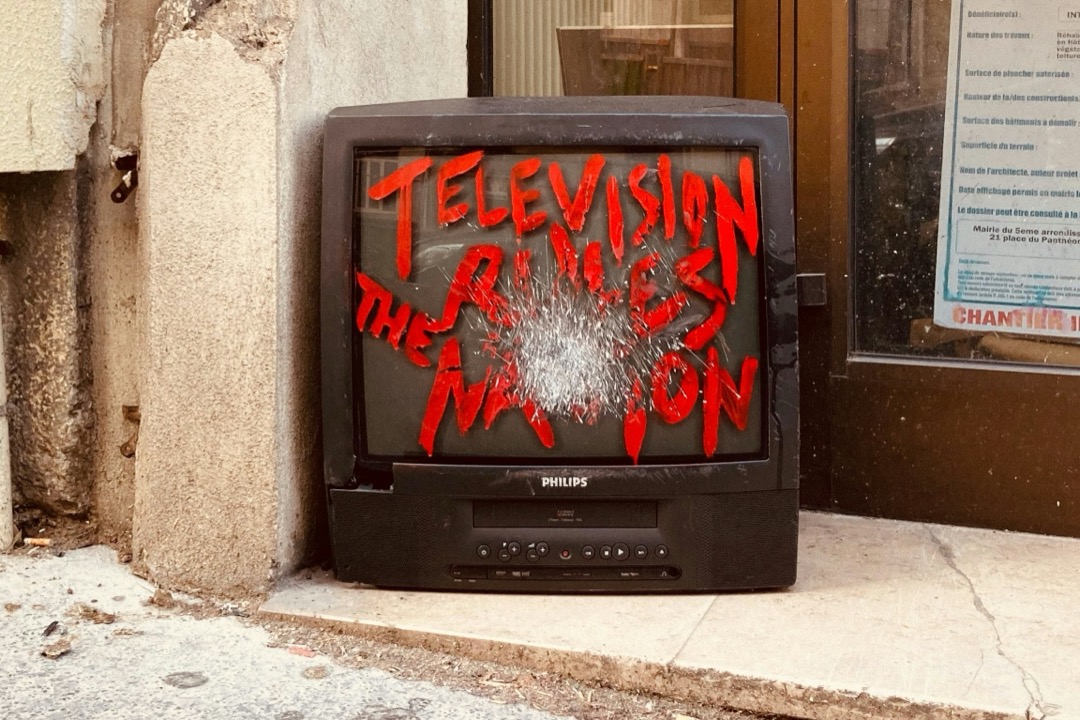Comparing the Risks of Social Media and Mass Media
Adam Aleksic wrote recently on the similarities between the harms we popularly attribute to social media and those attributed to television. I grew up squarely in the midst of the moral panic that Baby Boomer parents felt over the malign influence of television on their children. No doubt influenced by their own tender years spent in front of the “boob tube,” there seemed to be endless hand wringing over not whether but how much TV would damage kids’ brains. I see the parallels between that shared freakout and today’s panic over the impact of social media, even as I harbor plenty of concern myself.
The first and most obvious parallel to me is that so much of the anxiety seems to be displaced from parents to children. That is, the young parents of the 70s and 80s represented the first generation of children who grew up with TV in the house expressing worry about its influence on their own children. It’s not hard to see how much of that concern seems motivated by fear of the damage their own exposure to television may have caused. Likewise, today’s young parents come from the first generation of social media users, and one way they are grappling with the harms they experienced is to express worry for their children. Like many parents, I’m not only trying to minimize my daughter’s exposure to social media, I’m also minimizing my own.

I think Aleksic’s notes on the similarities between TV and social media should prompt those of us who see the harms as distinct to be more clear about what those differences are. Two immediately come to mind for me:
The first is accessibility and ubiquity, as noted in his piece. The availability of social media on personal, portable, handheld devices greatly increases its reach, and its ability to send urgent-seeming notifications and alerts allows it to interrupt non-social media activities and colonize more of our time and attention. Television, much as its critics may have complained about its supposed inescapability, could never have such direct, immediate, and intrusive access to its viewers.
The other is the very tight feedback loop of individualized, algorithmic adjustments these apps use. Any individual TV channel was (and is) the same for all viewers. But modern social media apps learn from their users, reading both overt and subtle, implicit behavioral cues to shape their behavior. It’s critical to remember that social media apps are designed with a goal in mind—almost always to encourage more and more time and “engagement” in app—and are designed to achieve those goals by constantly tweaking the way they work. These adjustments can be so effective because they are based on a direct stream of individualized behavioral data (each user’s activity within the app), and they do not need to compromise their effectiveness by targeting more than one individual at a time. In other words, it poses no problem if the thing that would make your social media feed maximally engaging to you would be extremely distasteful to me, because I’ll never see your feed.
The propagandists of the mass media era had to develop grand theories of messaging and communication to underlie their efforts to manipulate public sentiment, because they could only address their messages to the collective public. (e.g., Propaganda by Edward Bernays) Modifying behavior through social media requires no larger framework to inform what works and what doesn’t. Its infinitely granular addressability and adaptability simply requires the diligence to conceive of and execute as many experiments as necessary to achieve the desired result, because the effectiveness of each can be easily and directly measured.
This effect is magnified by how much tighter the experimental iteration cycle is in the social media world than it is in television. In just a few seconds of scrolling through a feed, a social media app may run dozens of experiments to gauge a user’s engagement and adjust its behavior in real time. The amount of time it takes to produce a piece of television media, broadcast it, gather audience feedback, and incorporate changes into more content is better measured with a calendar than a stopwatch. And this means that even if each refinement has only a tiny effect, the overall impact is much greater because refinements can be made in much greater volume.
It is certainly instructive to consider modern attitudes toward technologies like social media in the context of earlier generations’ reactions to media innovation. It’s important to remember that, in their day, the invention of the novel and the spread of mass market paperback publication were both considered socially harmful by at least some concerned authorities. But it’s also important to identify what’s distinctive about new media technology and consumption, and to be able to articulate how those distinctions might represent new risks. It’s far harder to mitigate or manage unidentified risks than those we assume intentionally with good information.
